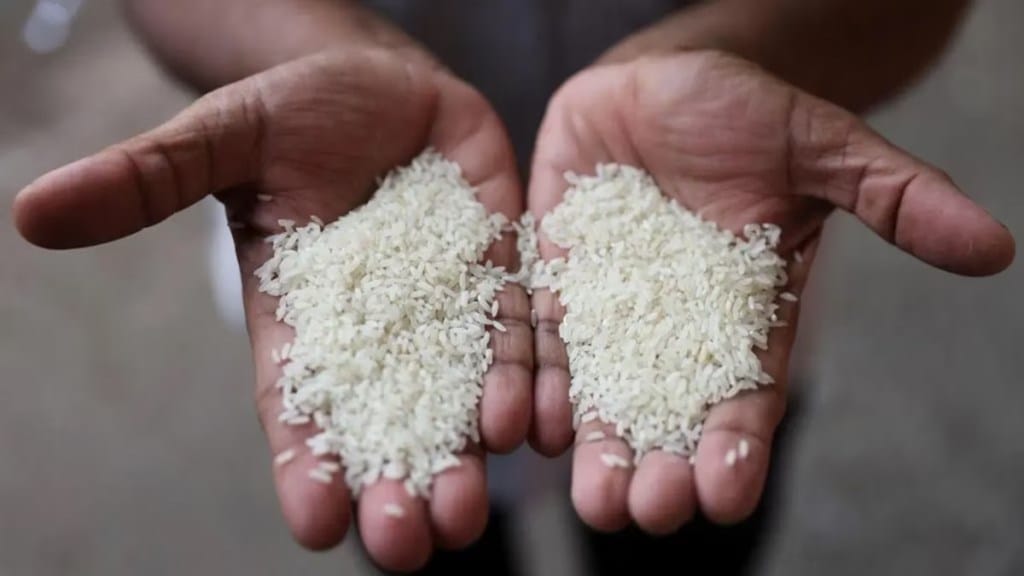Amid concerns about the rising food subsidy bill, the finance ministry has called a meeting with the food ministry officials on Thursday to discuss the later’ proposal to hike food subsidy budget for FY26 by 10% to 15% from the budget estimate (BE) for Rs 2.03 lakh crore.
Sources told FE that the finance ministry has stated that projected additional subsidy expenses of around Rs 20,000 crore in 2025-26 for supplying subsidised rice sold through open market sale, and for grain-based ethanol blending programme should be delinked from the food subsidy expenses. Such expenses could be reduced by measures like reducing the grain stocks, raising the open market price, and using less subsidised grain for bio-fuel requirements.
The food subsidy largely pertains to the supply of free food grains to 810 million under the National Food Security Act. Economic cost of NFSA grain management has been rising relentlessly due to stocks much higher than buffer levels, and lack of any increase in issue prices.
Against the economic cost of rice projected at Rs 41.73/kg for FY26, FCI currently is supplying rice at Rs 23.2/kg to grain based ethanol manufacturers and Rs 28/kg for open market sale scheme. Its allocation of rice for the non-NFSA activities is as high as 10.6 million tonne for FY26, the finance ministry noted.
The food ministry has stated that a periodic annual increase in minimum support price (MSP) of rice and wheat in the range of 3% to 7% and open ended procurement of rice and wheat provided to farmers which had led to surplus grain stock.
Officials said this has pushed up the economic cost – MSP, storage, transportation and other costs – of handling grains for the FCI leading to demands for higher food subsidy outgo than the budget estimate.
Officials of the finance and food ministries are likely to discuss rising food subsidy expenses and ways to reduce stocks held with FCI.
Annually the FCI supplies around 36 – 38 MT of rice and 18 – 20 MT of wheat under the free ration scheme or Pradhan Mantri Garib Kalyan Anna Yojana to around 800 million people. The MSP procurement from the farmers has been in the range of 75 to 80 MT in the last many years leading to piling up of stocks.
At the beginning of the month, the government’s central-pool rice stock was over 44 MT, over 3 times the buffer of 10.25 MT for October 1. The current stock with FCI includes about 10 MT of grain yet to be received from millers.
Sources said recently food corporation of India (FCI), through which over 70% subsidies are routed, has revised upward the projected expenditure from Rs 1.4 lakh crore (budget estimate) to Rs 1.7 lakh crore for 2025-26 mainly because of surplus rice stocks which far exceeds the buffer.
The government is aiming to offload a record 10 MT of rice at the subsidised rate in the market in the current fiscal from its surplus stock. So far the corporation has offloaded 6.1 MT of rice through open market sale, liberal allocations to states, and for ethanol manufacturing and Bharat rice initiative so far in the current fiscal.
The FCI’s economic cost for rice and wheat for 2025-26 as per budget estimate is projected to increase to Rs 41.73/kg and Rs 29.80/kg, respectively, up from Rs 40.42/kg and Rs 28.50/kg in 2024-25.
For FY26, the corporation has so far received Rs 75,921 crore, or 53% of its annual food subsidy allocation as per the BE from the finance ministry. In addition, the ministry has provided Rs 50,000 crore as wage and means advance which has to be repaid by the corporation by March 31, 2026.
Rest of the food subsidy is routed directly through those states following decentralised procurement model.

